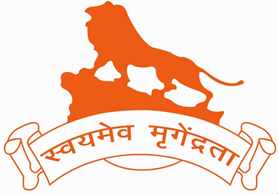A Prescription-Strength Formula for Stronger Cybersecurity in Healthcare Organizations
The necessity of making sense from this data and extracting valuable inferences have become crucial. Therefore, the advanced system is required for managing the flood of this clinical data where NLP would be a suitable tool. The other is mapping out the critical information from databases and documents to help doctors and practitioners make informed decisions. Kotanko indicates that nephrologists and other medical disciplines use AI and ML to assess images from radiology or histopathology, as well as images taken by smartphones to diagnose a patient’s condition. “We’re no longer in an infancy stage,” says Natalie Schibell, vice president and research director for healthcare at Forrester Research, noting the impact of the COVID-19 pandemic in accelerating digital transformation.

Since the machine model that Repustate developed for them read and analyzed the data natively, it did not dilute the nuances of the Arabic text. The automated Arabic sentiment analysis model understood Arabic and its dialects seamlessly and classified and categorized the valuable feedback thanks to a dedicated Arabic part-of-speech tagger, Arabic lemmatizer, and Arabic-specific sentiment models. The Arabic natural language processing (NLP) model identified topics and themes automatically https://www.globalcloudteam.com/ for more granular sentiment analysis, leading to key business insights for Nahdi. Advancements in natural language processing (NLP) – a branch of artificial intelligence that enables computers to understand written, spoken or image text – make it possible to extract insights from text. Using NLP methods, unstructured clinical text can be extracted, codified and stored in a structured format for downstream analysis and fed directly into machine learning (ML) models.
Toronto General Hospital Review
At the end of the successful experiment, the algorithm performed better than expected and the model’s overall positive predictive value stood at 97.45%. A set of researchers from France worked on developing another NLP based algorithm that would monitor, detect and prevent hospital-acquired infections (HAI) among patients. NLP helped in rendering unstructured data which was then used to identify early signs and intimate clinicians accordingly. Hierarchical Condition Category coding, a risk adjustment model, was initially designed to predict the future care costs for patients.

Such a procedure will allow the national health service to constantly monitor the trends in cancer incidence and enhance its data-driven decision-making. When it comes to collecting, processing, and managing massive amounts of data to get precious insight into medical phenomena, NLP is definitely one of the first candidates. Typically combined with computer vision, machine learning, and deep learning technologies, NLP solutions can gather information from different sources such as medical records, clinical case reports, or public health forums. Alongside other artificial intelligence technologies such as computer vision and machine learning, natural language processing (NLP) has made its way into the healthcare industry by ensuring medical devices can read, listen, and interact with humans. Research has shown that artificial intelligence in healthcare can ease the process of physician assessment and automate patient diagnosis, reducing the time and human effort needed in carrying out routine tasks such as patient diagnosis.
Unlocking the Potential of Unstructured Healthcare Data Using NLP
Integrating NLP with electronic health record systems will help take off workload from doctors and make analysis easier. Already, virtual assistants such as Siri, Cortana, and Alexa have made it into healthcare organizations, working as administrative aids, helping with customer service tasks and help desk responsibilities. For advanced patient health record systems, managed care, PHM applications, and analytics and reporting, there is an urgent need to tap into the reservoir of unstructured information that is only getting piled up with healthcare organizations. Once the query is understood, Natural language processing models search through healthcare literature and databases to find the most relevant information to answer the question.
The adoption of natural language processing in healthcare is rising because of its recognized potential by health systems to search, analyze and interpret mammoth amounts of patient datasets. Using advanced medical algorithms and machine learning in healthcare, NLP technology has the potential to harness relevant insights and concepts from clinical notes that was previously considered by the healthcare industry as buried in text data form. NLP in healthcare can accurately give voice to the unstructured data of the healthcare universe, giving incredible insight into understanding quality, improving methods, and better results for patients. Medical NLP is used in the healthcare industry by a wide range of healthcare professionals, including physicians, nurses, pharmacists, and administrators. It helps them streamline workflows, improve predictive analytics and reduce administrative burden.
How CRISPR shapes the future of disease diagnosis and treatment
NLP helps healthcare organizations to analyze important elements in data that include remunerations, working hours, benefits, the quality of medical equipment, effective leadership, and staff morale. Measuring and monitoring job satisfaction changes usually begins with surveying staff on various topics relevant to job satisfaction and employee experience. NLP also enables physicians to use key information for decision-making and analytics by unlocking the unstructured data from documents and databases and mapping out the basic values and concepts.
NLP tools are creating an ambient virtual experience between patients and physicians through a virtual platform without any physical meeting. The ambient virtual systems in prior investigate the patient’s EHR to make sure whether the doctor’s presence is true. To harness large chunks of data stored in the form of speech, text, pictographs, images, etc., and to derive meaningful insights, healthcare is leveraging NLP tools. Soon, NLP in Healthcare might make virtual assistants cross over to the clinical side of the healthcare industry as ordering assistants or medical scribes. NLP for Health Information Extraction and Summarization
Natural language processing extracts vital information from medical literature, enabling efficient access to relevant knowledge for evidence-based practice and research. NLP for Disease Diagnosis and Risk Prediction
Natural language processing analyzes patient symptoms and diagnostic reports, aiding disease diagnosis and predicting condition risks, enabling early intervention and personalized treatment planning.
Discoveries and Innovations in Medical Practices:
For example, a patient might tell her doctor that she’s experienced a headache for the past two weeks and feels anxious when she walks fast. After examining the patient, the doctor might note that she has no symptoms of alopecia and that she doesn’t appear to be in any pain.
The organization deals with clinical trial documents that run into thousands of pages and must be submitted to regulatory authorities such as the FDA. These documents cannot carry private patient information as part of regulatory compliance. For example, the healthcare NLP algorithm was helpful in identifying at-risk Kawasaki patients with a specificity of 77.5% and sensitivity of 93.6% compared to a manual review. In such cases, NLP can identify which patients need immediate assistance and provide the right life-saving decisions. NLP in healthcare facilities makes the information more accessible and understandable.
Sentiment analysis in healthcare services
See how using natural language processing technology can help you capture all appropriate HCC categories and get the Medicare reimbursements you deserve. Also important to note is that research continues into how NLP negation can be used to detect complex interactions between multiple medical conditions or symptoms and treatments. As more studies are conducted, it is anticipated that the effectiveness of NLP negation in health data will continue to grow, ultimately leading to improved patient outcomes. Most natural language processing healthcare engines are built to accommodate a wide variation of medical notation terminology.
- Typically combined with computer vision, machine learning, and deep learning technologies, NLP solutions can gather information from different sources such as medical records, clinical case reports, or public health forums.
- Regarding data, the implementation of cloud-based solutions combined with NLP tools looks set to grow rapidly, thanks to their ability to ensure easy data maintenance along with the well-known cost-effectiveness and scalability.
- Instead, they can also recognize different types of concepts in a text and label them based on their semantic nature.
- Front-end speech recognition eliminates the task of physicians to dictate notes instead of having to sit at a point of care, while back-end technology works to detect and correct any errors in the transcription before passing it on for human proofing.
- One of the most promising is the Attention Mechanism, which you can read about in our article covering NLP basics.
- So, new data-related adoption often comes with extra work on your other applications.
However, using uncommon acronyms can confuse NLP coding algorithms and other medical note readers. As you can see based on this example, this application of natural language processing examples enables physicians to optimize patient care by identifying which problems are most pressing and administering immediate treatment. The two primary algorithms used in NLP are rule-based systems, which interpret text based on predefined grammatical rules, and machine learning models, which use statistical methods and “learn” over time by being fed training data. Fortunately, NLP has made great strides in terms of human/machine interaction, specifically in turning the unstructured data typical of our daily communication into structured information usable by computers.
How IMO is making your data more usable, at scale
What is not so well-known to the general public, however, is the role played by NLP in healthcare software development. According to MarketsandMarkets’ 2020 Natural Language Processing in Healthcare and Life Sciences Market report, the global NLP market was valued at $1.5 billion in 2020 and is expected to reach $3.7 billion by 2025, with a CAGR of 20.5%. Leveraging NLP helps in identifying and adjusting risk conditions to be provided by a value-based system. Using NLP in assessing the blueprint of implementing technology could help in detecting operation accuracy and risk management in prior.
